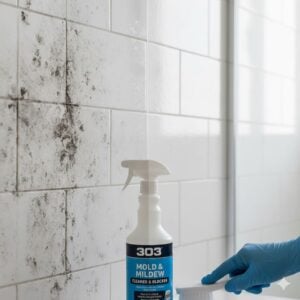When you check the weather app in the UAE, you may notice another number beside the temperature — the AQI, or Air Quality Index. For many residents, this number often sparks curiosity and concern, especially when it turns yellow, orange, or even red. The aqi dubai is an essential indicator of how clean or polluted the air is at any given time, and it can fluctuate daily depending on multiple factors. Understanding what the average AQI in Dubai means, how it’s measured, and what influences it can help you make healthier choices for yourself and your family. In this article, we’ll explore how AQI works, what affects air quality in Dubai, and what steps can be taken to improve it both individually and collectively.
Table of Contents
ToggleWhat Is AQI?
AQI stands for Air Quality Index — a standardized system used globally to communicate how safe the air is to breathe. It combines several types of air pollutants into one number, making it easier for the public to understand overall air health. The AQI scale typically ranges from 0 to 500. Lower numbers indicate cleaner air, while higher numbers suggest higher levels of pollution and increased health risks. An AQI between 0–50 is considered “Good,” 51–100 “Moderate,” 101–150 “Unhealthy for Sensitive Groups,” 151–200 “Unhealthy,” 201–300 “Very Unhealthy,” and anything above 300 “Hazardous.”
The Average AQI in Dubai
The average aqi dubai throughout the year typically ranges from 100 to 160, depending on the season, weather conditions, and human activities. This level falls under “Moderate to Unhealthy for Sensitive Groups” according to international air quality standards. On some days, especially during dust storms or high traffic hours, the AQI can spike above 200 in certain districts. On the other hand, after rain or during cooler months when humidity drops, the AQI often improves, falling below 100 in several parts of the city.
Dubai’s AQI data is continuously monitored through stations operated by the Dubai Municipality and the Ministry of Climate Change and Environment. These stations track real-time concentrations of key pollutants such as PM2.5 (fine particulate matter), PM10 (coarse dust particles), nitrogen dioxide (NO₂), sulfur dioxide (SO₂), ozone (O₃), and carbon monoxide (CO). The results are combined to produce a single index value that represents the air quality level for the day.
Main Pollutants That Affect AQI in Dubai
Several major pollutants influence the aqi dubai, each with unique sources and effects:
1. PM2.5 and PM10 (Particulate Matter): These are the most significant contributors to Dubai’s air quality issues. PM2.5 refers to fine particles smaller than 2.5 micrometers, while PM10 refers to slightly larger particles. They come from construction dust, vehicle emissions, and natural desert sand. Due to their tiny size, these particles can penetrate deep into the lungs and bloodstream, causing respiratory and cardiovascular problems.
2. Nitrogen Dioxide (NO₂): Produced mainly by vehicle engines and industrial activities, NO₂ irritates the airways and contributes to smog formation. Areas with heavy traffic, such as Sheikh Zayed Road, often record higher NO₂ levels.
3. Ozone (O₃): Unlike other pollutants, ozone isn’t directly emitted but forms when sunlight reacts with nitrogen oxides and volatile organic compounds. Dubai’s hot and sunny climate makes ozone pollution a recurring issue during summer months.
4. Sulfur Dioxide (SO₂): Emitted from industrial activities and marine fuel combustion, SO₂ contributes to acid rain and respiratory issues. Though regulated, it still affects the air near ports and industrial zones.
5. Carbon Monoxide (CO): Generated from incomplete combustion of fossil fuels, CO levels rise during peak traffic hours but usually dissipate quickly due to Dubai’s open layout and wind patterns.
Seasonal Patterns of AQI in Dubai
The aqi dubai varies significantly with the seasons. During summer, high temperatures and humidity create conditions where pollutants linger longer near the ground. This results in elevated ozone and particulate matter levels. In contrast, winter months bring milder temperatures and occasional rain, which help clear the air temporarily. However, sandstorms — common in late spring and early summer — can suddenly push the AQI into the “Very Unhealthy” range even within hours.
According to long-term data, the worst air quality days in Dubai usually occur between May and August, when strong desert winds carry dust across the city and humidity traps pollutants close to the surface. The best air quality is typically recorded in December and January, following periods of rain or cooler weather.
Human Factors Affecting AQI in Dubai
Beyond natural causes, human activities significantly influence the city’s air quality levels.
1. Traffic and Transportation
With millions of vehicles on Dubai’s roads daily, transportation remains one of the biggest contributors to poor air quality. Despite ongoing efforts to promote electric and hybrid vehicles, the majority of cars still rely on petrol or diesel. Traffic congestion near business hubs like Downtown, Marina, and Deira increases localized pollution levels and raises the daily AQI.
2. Construction and Urban Expansion
Dubai’s rapid growth means construction never truly stops. The dust from construction sites, demolition work, and unpaved roads contributes to elevated PM10 levels. Even with dust-control measures like water spraying, fine sand particles often become airborne, worsening the air quality.
3. Industrial Activities
Factories, desalination plants, and power stations release pollutants that can influence nearby residential areas, especially during periods of low wind movement. Industrial pollution combined with vehicle emissions creates smog-like conditions in some areas during still, hot days.
4. Marine Traffic
Shipping emissions from Dubai’s busy ports also play a role in raising sulfur dioxide and nitrogen oxide levels. Cargo ships and cruise liners emit large quantities of these gases when docked or departing, contributing to poor AQI in coastal districts.
5. Waste Burning
Illegal or open waste burning, although much less common today, can still cause temporary spikes in local AQI readings. Burning plastics and organic waste releases a mix of harmful gases and particles that linger for hours in the surrounding area.
How AQI Is Measured in Dubai
Dubai uses internationally recognized monitoring stations to calculate its AQI. These devices collect air samples and analyze pollutant concentrations, which are then converted into a unified AQI score. The AQI value is calculated based on the pollutant with the highest impact for that day — known as the “dominant pollutant.” Data is updated hourly, providing residents with near real-time information via websites and mobile applications.
Residents can check live AQI levels from sources like the Dubai Municipality air quality portal or global trackers such as IQAir and Breezometer. On days when AQI readings are above 150, authorities usually advise sensitive groups, including children, the elderly, and those with heart or lung conditions, to limit outdoor activities.
Impact of Poor AQI on Health
Continuous exposure to high AQI levels can cause both short-term and long-term health problems. Short-term effects include eye irritation, coughing, sore throat, and fatigue. Long-term exposure can lead to chronic respiratory issues, reduced lung function, and even cardiovascular disease. Studies have shown that fine particulate matter (PM2.5) poses the greatest threat because it penetrates deep into lung tissue and enters the bloodstream, leading to inflammation throughout the body.
How Dubai Is Addressing AQI Challenges
The Dubai government has recognized the importance of air quality as part of its environmental sustainability agenda. Through initiatives like the Dubai Clean Energy Strategy 2050 and the UAE Vision 2030, the city aims to reduce carbon emissions, expand green spaces, and encourage renewable energy use. Stricter emissions controls, cleaner fuel standards, and continuous air monitoring are also part of this effort. The government’s “Green Mobility” program supports the use of electric vehicles, with incentives for EV owners and expansion of charging stations citywide.
What You Can Do to Reduce Exposure
Although improving AQI citywide requires systemic change, individuals can still protect themselves and help reduce pollution:
- Check aqi dubai levels before going outdoors, especially during dusty or humid days.
- Use air purifiers at home to maintain indoor air quality.
- Keep AC filters clean and serviced regularly to prevent pollutant buildup.
- Avoid idling car engines unnecessarily to reduce emissions.
- Choose public transportation or carpooling when possible to limit traffic congestion.
Conclusion
The aqi dubai is a crucial measure of how healthy the city’s air is, and it reflects both natural desert conditions and human impact. Factors like traffic, construction, weather patterns, and industrial activities all influence the AQI levels residents experience daily. While the average AQI hovers between 100 and 160, spikes occur during dusty or hot conditions. Awareness and individual responsibility play key roles in improving air quality, alongside government initiatives that target cleaner energy and sustainable growth. If you notice increased dust or poor air circulation in your home during high AQI periods, Bio-On Cleaning Services can help improve your indoor air quality through deep cleaning and duct sanitization. Click the contact button on the right middle of this article to connect with our experts and breathe easier in your Dubai home or office.













